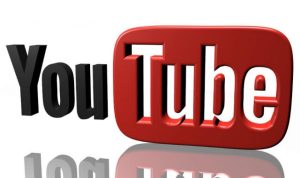How Meditation Apps Are Used in Education presents an innovative approach to enhancing learning environments. As educational institutions increasingly recognize the importance of mental well-being, meditation apps have emerged as valuable tools in fostering focus, reducing stress, and improving overall student performance. This exploration delves into the integration of these digital resources into educational settings, highlighting their benefits and the transformative potential they hold for both students and educators.
By providing guided meditations and mindfulness exercises, these applications not only serve as a personal resource for students but also encourage a collective culture of mindfulness within classrooms. As the educational landscape evolves, the adoption of meditation apps reflects a growing understanding of the interconnectedness of mental health and academic success.
The rapid evolution of technology has dramatically transformed various sectors, including healthcare, education, and business. This transformation is particularly notable in the realm of communication, where digital platforms have revolutionized the way individuals and organizations interact. In this article, we examine the profound impact of communication technology on society, exploring its advantages, challenges, and future implications.Communication technology encompasses a broad range of tools and platforms that facilitate the exchange of information.

From traditional mediums such as telephones and radio to modern-day innovations like social media and instant messaging applications, these technologies have reshaped how people connect, share, and collaborate. The advent of the internet has been a game-changer, providing a universal platform for communication that transcends geographical barriers.One of the most significant advantages of communication technology is its ability to enhance connectivity.
In today’s globalized world, individuals can communicate with others across continents in real-time. This unprecedented level of connectivity fosters collaboration among people from diverse backgrounds and cultures, enabling the sharing of ideas and innovation at an unprecedented scale. Businesses can operate on a global scale, reaching customers and partners in ways that were previously unimaginable.Moreover, communication technology has democratized access to information.
The proliferation of smartphones and internet-enabled devices has made it possible for individuals to access vast amounts of information at their fingertips. This increased access empowers individuals to educate themselves, stay informed about global events, and engage in discussions about important societal issues. Social media platforms, in particular, have become vital tools for raising awareness and mobilizing action around various causes, from climate change to social justice.However, the rapid advancement of communication technology is not without its challenges.
The digital divide remains a significant issue, with disparities in access to technology and the internet creating inequalities in communication capabilities. Rural areas and low-income populations often lack reliable internet access, which hinders their ability to participate fully in the digital age. Addressing this divide is crucial for ensuring that all individuals can benefit from the advantages of modern communication technologies.Privacy and security concerns also emerge as critical issues in the realm of communication technology.
As individuals increasingly rely on digital platforms for personal and professional communication, the risk of data breaches and cyberattacks rises. High-profile incidents involving the exposure of sensitive information have raised awareness about the importance of safeguarding personal data. It is essential for both individuals and organizations to adopt robust cybersecurity measures to protect against potential threats.Furthermore, the impact of communication technology on mental health and well-being cannot be overlooked.
While these technologies enable connectivity, they can also contribute to feelings of isolation and anxiety. The phenomenon of social media fatigue, where individuals feel overwhelmed by constant notifications and the pressure to maintain an online presence, has gained attention in recent years. Striking a balance between online engagement and offline interactions is crucial for promoting overall well-being.Looking ahead, the future of communication technology promises to be even more transformative.
Emerging technologies such as artificial intelligence (AI), virtual reality (VR), and augmented reality (AR) are set to redefine how we communicate and interact with one another. AI-powered chatbots and virtual assistants are already streamlining communication processes in various sectors, enhancing customer service experiences and improving efficiency.Moreover, the integration of VR and AR into communication platforms could revolutionize remote collaboration. Imagine participating in a virtual meeting where colleagues from around the world can interact as if they were in the same room.
This immersive experience has the potential to enhance teamwork and creativity, fostering a sense of presence that traditional video conferencing lacks.In conclusion, communication technology has fundamentally reshaped how we connect, share, and collaborate. While it offers numerous advantages, such as enhanced connectivity and democratized access to information, it also presents challenges that must be addressed. As we move forward, it is essential to navigate these complexities thoughtfully and responsibly.
By doing so, we can harness the full potential of communication technology to create a more connected and equitable society. The trajectory of communication technology will undoubtedly continue to evolve, shaping the future of human interaction in ways we have yet to fully comprehend.





